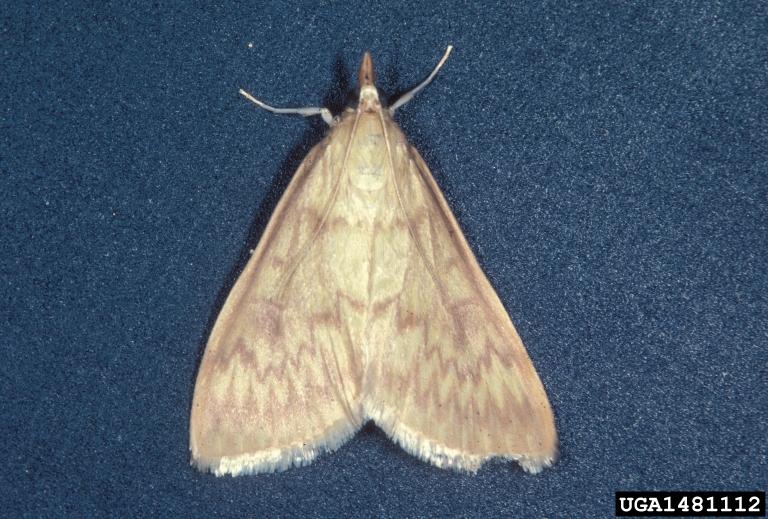Appearance
- Eggs: Oval, flattened, white, usually iridescent, overlapping like fish scales, in large clusters on leaf undersides. Darken somewhat with age.
- Larvae: Up to 1" long, pale pink or brownish-gray, hairless caterpillars with a brown head and side stripe and black dots on each section.
- Pupae: Red-brown, narrowing to a point at posterior.
- Adult: 1" moth. Females pale yellow to brown, males darker with even darker markings.





